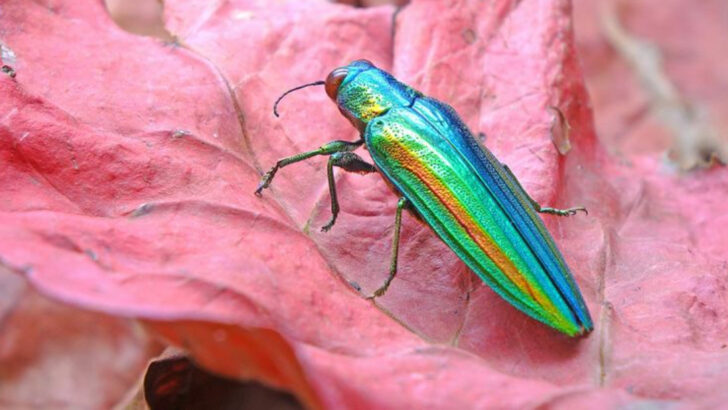This insect wears armor that looks hand-forged by fairies.
The Jewel Beetle isn’t just beautiful—it shimmers, sparkles, and gleams like it rolled out of a treasure chest. With colors that rival gemstones and patterns that look painted by a master artist, it’s hard to believe it’s a bug and not a piece of fine jewelry.
But don’t let the dazzle fool you—this beetle is more than a pretty face. It has secrets tucked beneath its shine, from strange survival skills to a bizarre history of being used in fashion and art.
Some insects hide in the shadows. The Jewel Beetle demands a spotlight.
Ready to meet the bug that could outshine a diamond? Here are 11 dazzling reasons why the Jewel Beetle is one of nature’s most jaw-dropping masterpieces.
Iridescent Colors
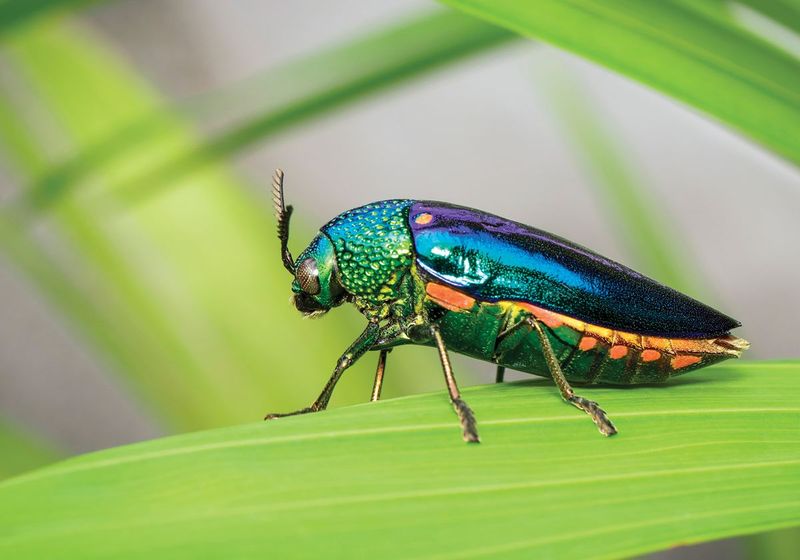
The Jewel Beetle is renowned for its iridescent colors that catch the light in mesmerizing ways. These colors are not just for show; they serve as a defense mechanism, confusing predators.
Imagine a beetle glistening in hues of green, blue, and gold, as it flits through the canopy. Its colors are due to microscopic structures on its shell that refract light.
This scientific wonder not only protects the beetle but also contributes to its stunning beauty. Truly, it is nature’s version of a kaleidoscope.
Intricate Wing Patterns
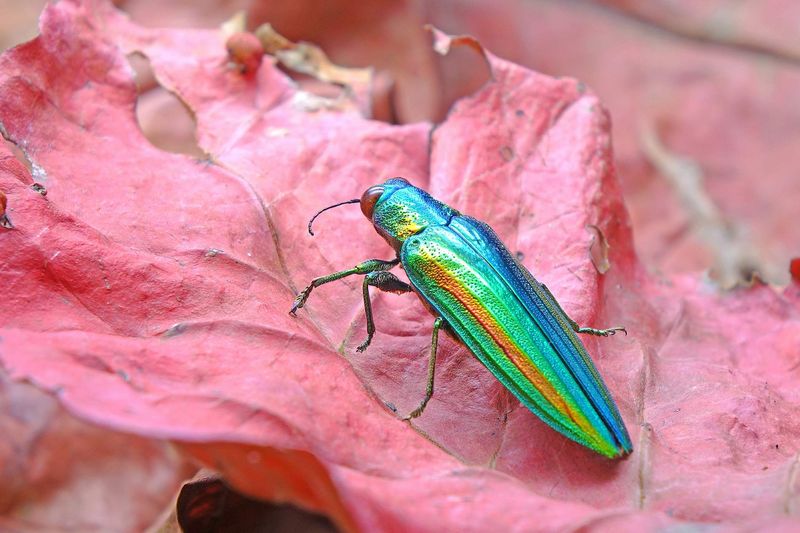
Jewel Beetles boast intricate wing patterns that are as unique as a fingerprint. Each beetle’s wings tell a story of evolution and adaptation.
These patterns have inspired artists and designers worldwide, mimicking the beetles’ natural artistry. Looking closely, you’ll see lines and shapes that resemble fine art engravings.
Such complexity not only serves aesthetic purposes but also aids in camouflage, blending with the foliage. This dual function of beauty and disguise is a fascinating aspect of their existence.
Diverse Species
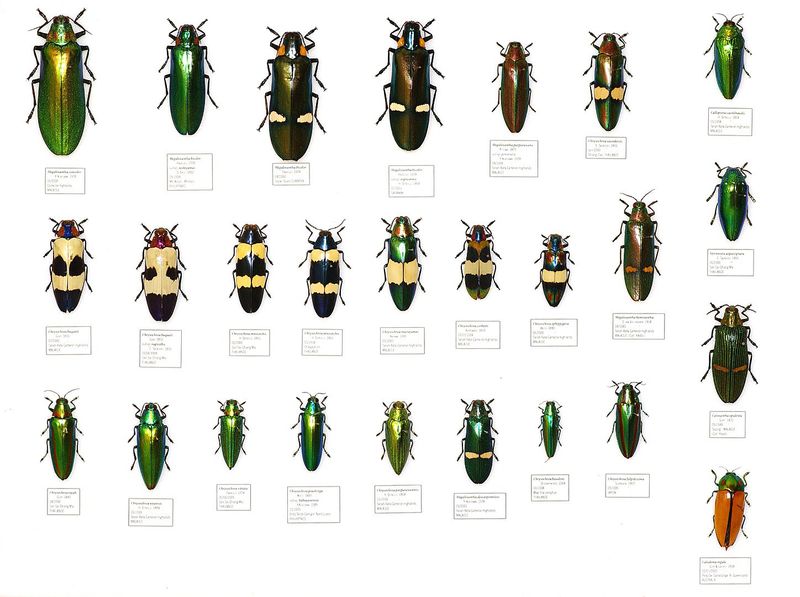
With over 15,000 species, Jewel Beetles are a testament to nature’s diversity. Each species varies in color, size, and habitat preference, showcasing the adaptability of this family.
Their existence across different continents highlights their ability to thrive in varied ecosystems. From rainforests to woodlands, they find their niche.
This diversity is not just a survival strategy but also an exhibition of nature’s artistic capabilities, offering endless fascination to entomologists and nature lovers alike.
Cultural Significance
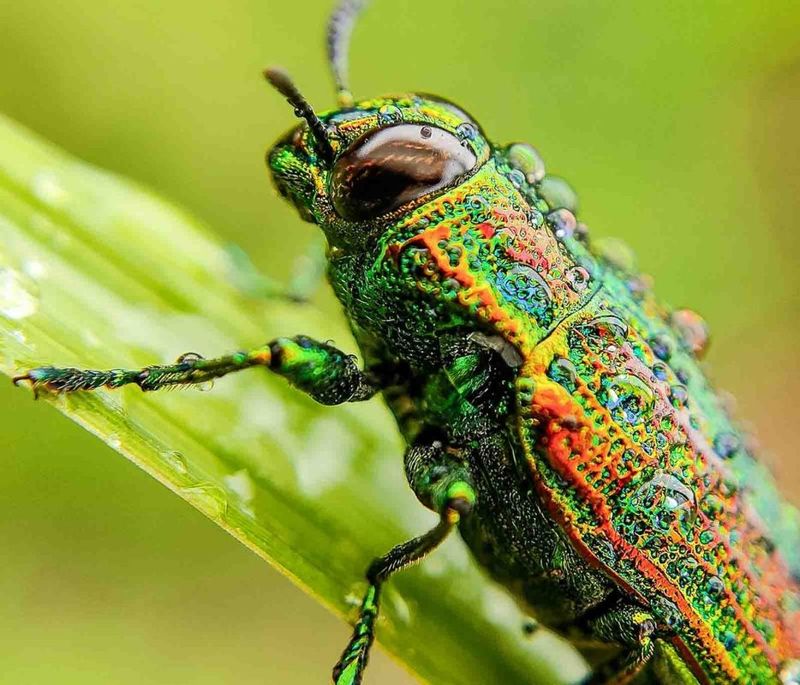
In many cultures, Jewel Beetles hold symbolic significance. They are often associated with transformation and beauty.
In some traditions, their vibrant shells are used in jewelry and crafts, signifying wealth and status. This practice dates back centuries, reflecting human admiration for their beauty.
The beetle’s allure transcends mere insect status, turning it into a cultural icon. Such usage enriches cultural narratives, embedding the beetle into the fabric of folklore and art.
Role in Ecosystems
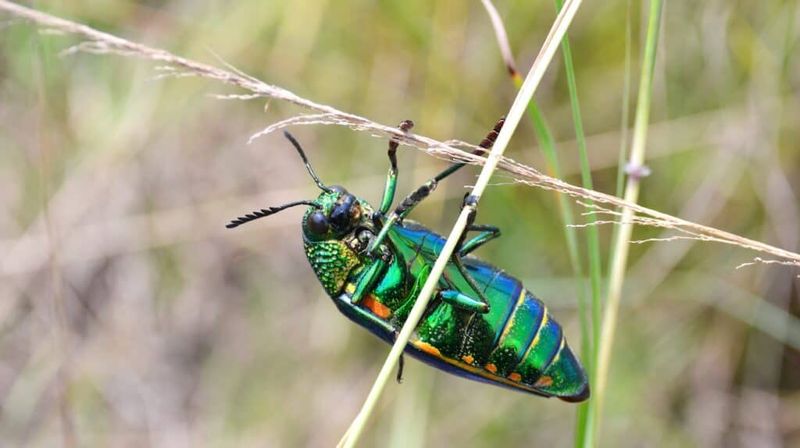
Beyond their beauty, Jewel Beetles play a crucial role in ecosystems. They help in pollination and the decomposition of dead trees.
Their larvae, while feeding on wood, aid in nutrient cycling, contributing to forest health.
This ecological role underscores their importance in maintaining biodiversity. Their presence is a reminder of the interconnectedness of life, where even the smallest creatures have significant impacts.
Scientific Research
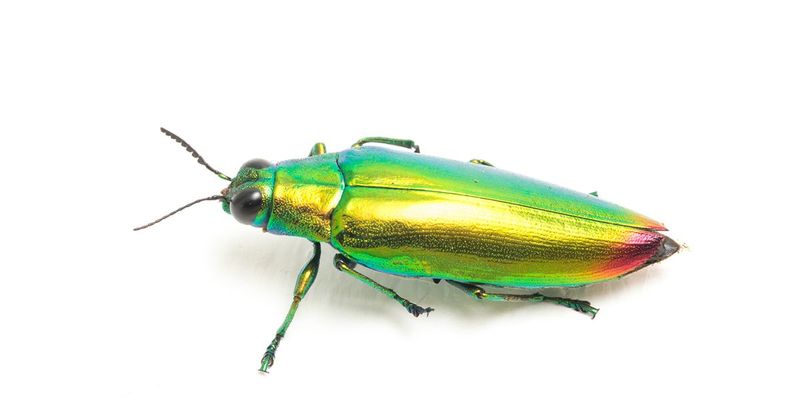
Jewel Beetles are subjects of scientific research due to their unique physical properties. Their iridescence and wing structures inspire biomimicry, influencing technology and design.
Researchers study how these beetles produce such vivid colors without pigments, leading to innovations in materials science.
This intersection of biology and technology exemplifies how studying nature can lead to groundbreaking advancements. Jewel Beetles, thus, are not just beautiful, but also hold keys to future innovations.
Adaptability
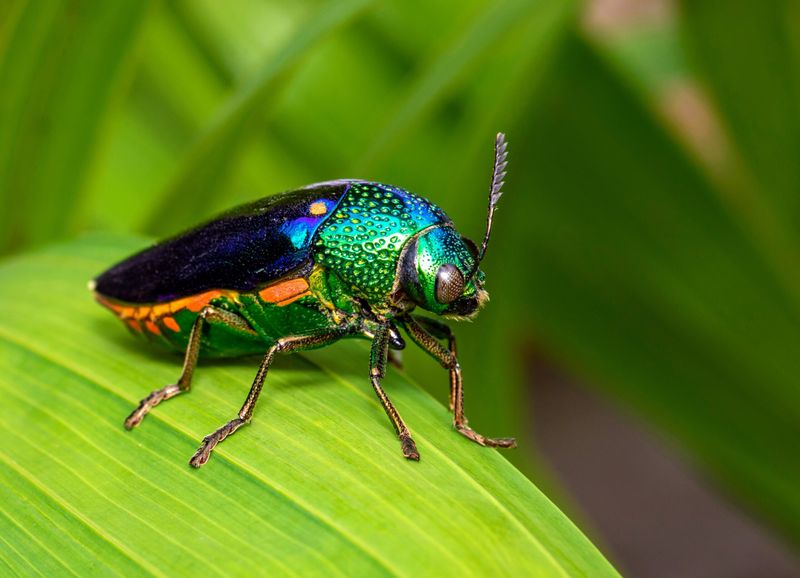
Jewel Beetles demonstrate remarkable adaptability, thriving in diverse environments from tropical rainforests to arid deserts.
Their ability to adjust and survive in varying conditions speaks to their evolutionary success. This adaptability ensures their survival against environmental changes.
Such resilience is a testament to their evolutionary ingenuity, allowing them to persist where others might fail. It underscores nature’s ability to craft creatures perfectly suited to their roles.
Historical Use

Throughout history, Jewel Beetles have been revered and utilized in various ways. Ancient civilizations used their shells as decorative elements in clothing and accessories.
This historical usage highlights their aesthetic appeal and the ingenuity of human artistry in utilizing natural resources.
By examining these practices, we gain insight into how past cultures viewed and valued natural beauty. Such historical contexts enrich our understanding of human-nature relationships.
Symbol of Transformation
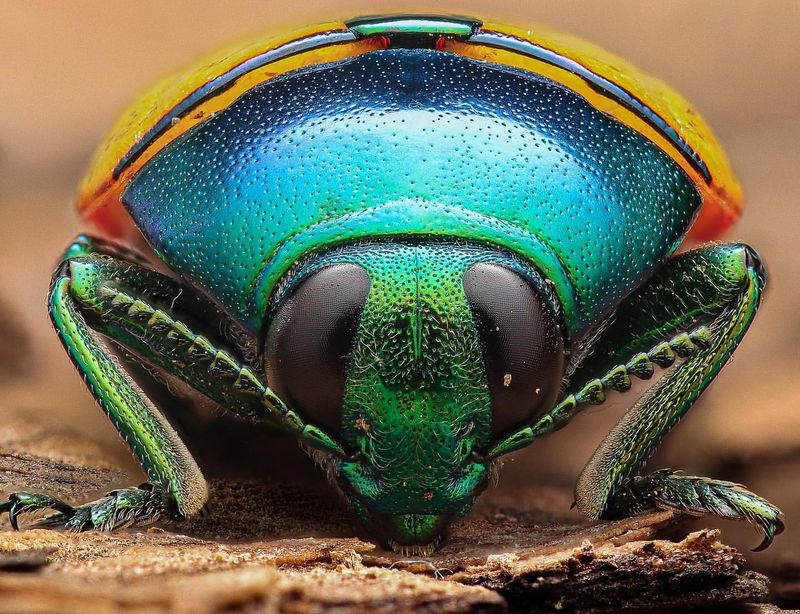
The Jewel Beetle is often seen as a symbol of transformation. Its life cycle, from larva to adult, represents change and renewal.
This symbolism resonates with many, reflecting the cycles of life and personal growth. In various cultures, beetles are seen as omens of change and rebirth.
Such symbolic interpretations add depth to our appreciation of these insects, elevating them beyond mere aesthetics to philosophical musings on life’s perpetual transformations.
Inspiration for Artists

Jewel Beetles have long inspired artists with their vivid colors and exquisite patterns. Painters, jewelers, and fashion designers find endless inspiration in their natural beauty.
Their presence in art is a testament to nature’s influence on human creativity. By incorporating beetle motifs, artists pay homage to the natural world, blending biology with artistic expression.
This artistic admiration showcases the ongoing dialogue between nature and human creativity, a relationship as old as art itself.
Conservation Efforts
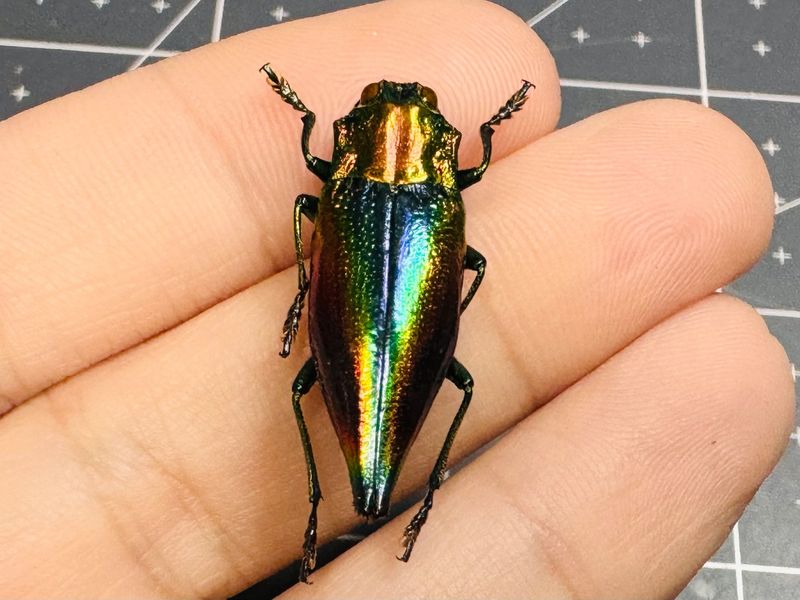
Conservation efforts are crucial for protecting Jewel Beetles and their habitats. As biodiversity faces threats, these beetles symbolize the broader struggle to preserve nature.
Efforts include habitat preservation and research to understand their ecological roles better.
Conserving Jewel Beetles means preserving the intricate balance of ecosystems. Protecting these vibrant insects ensures future generations can witness their beauty, a small yet significant part of our planet’s natural heritage.

